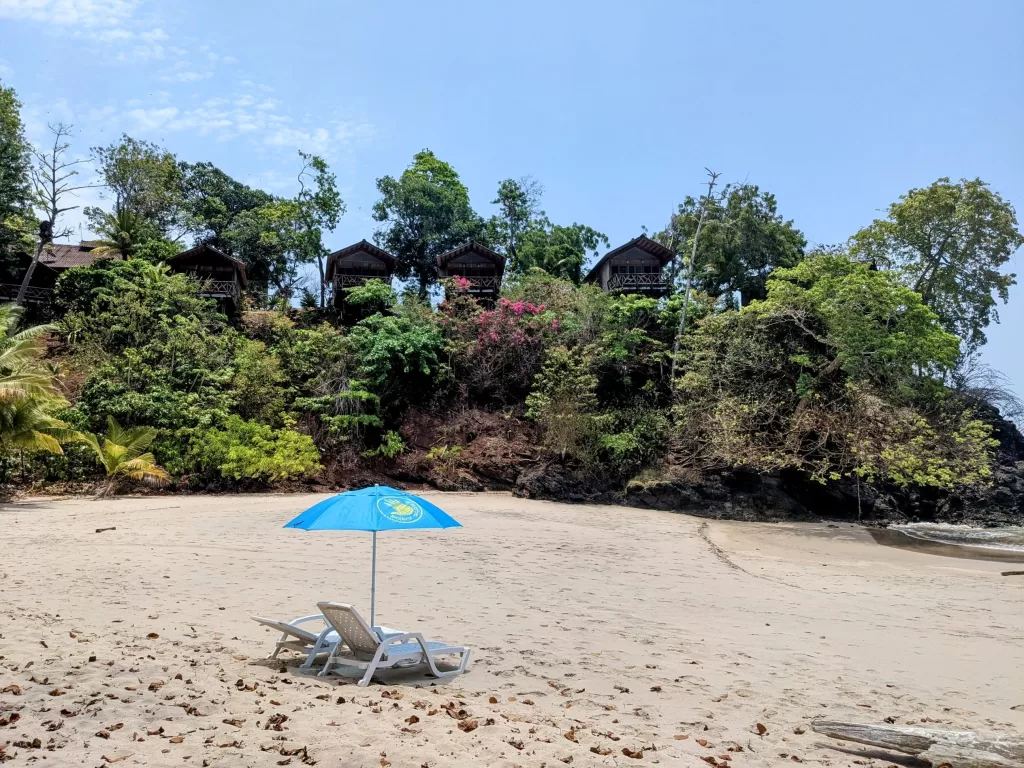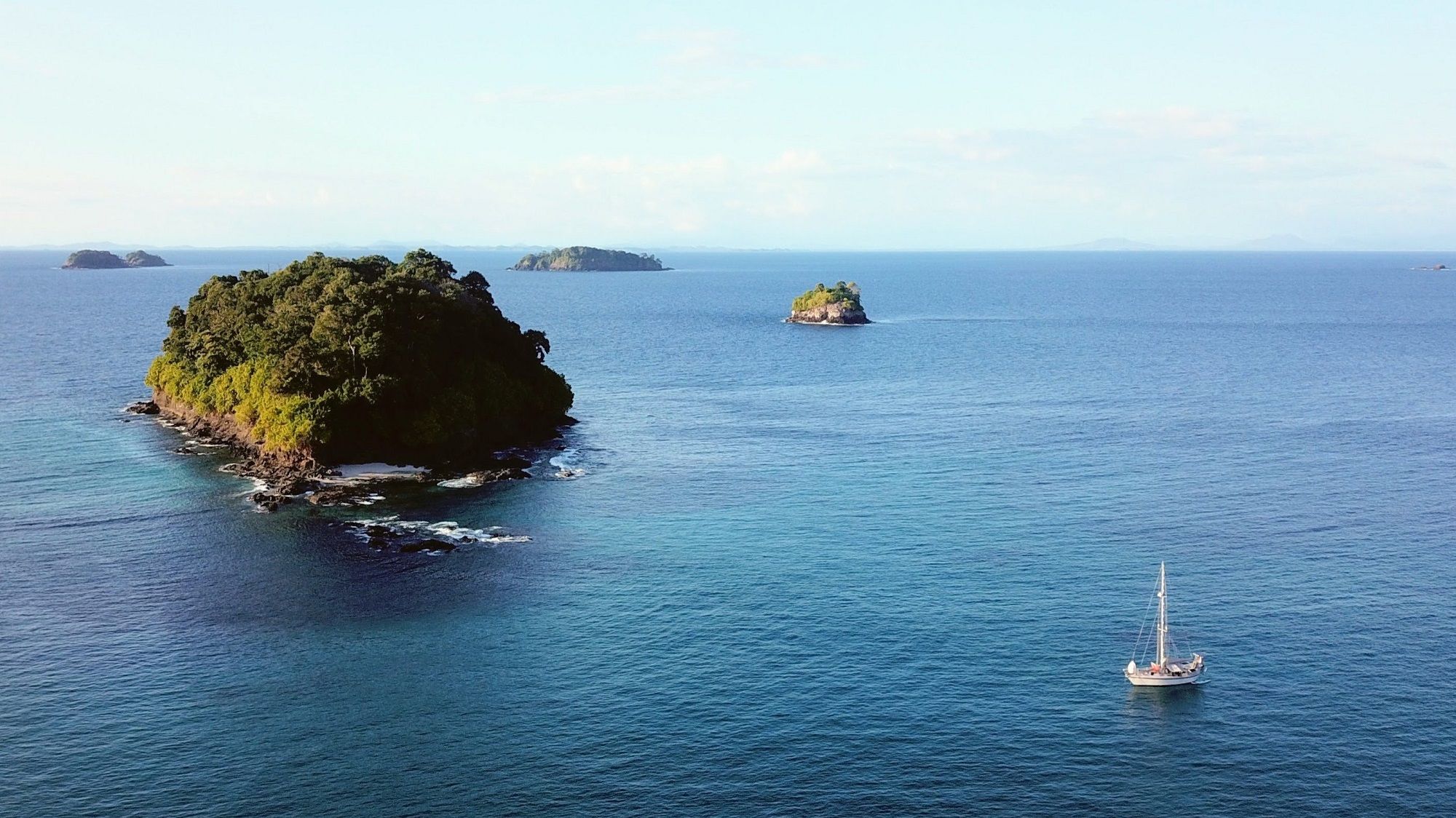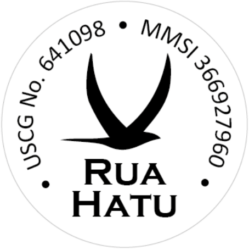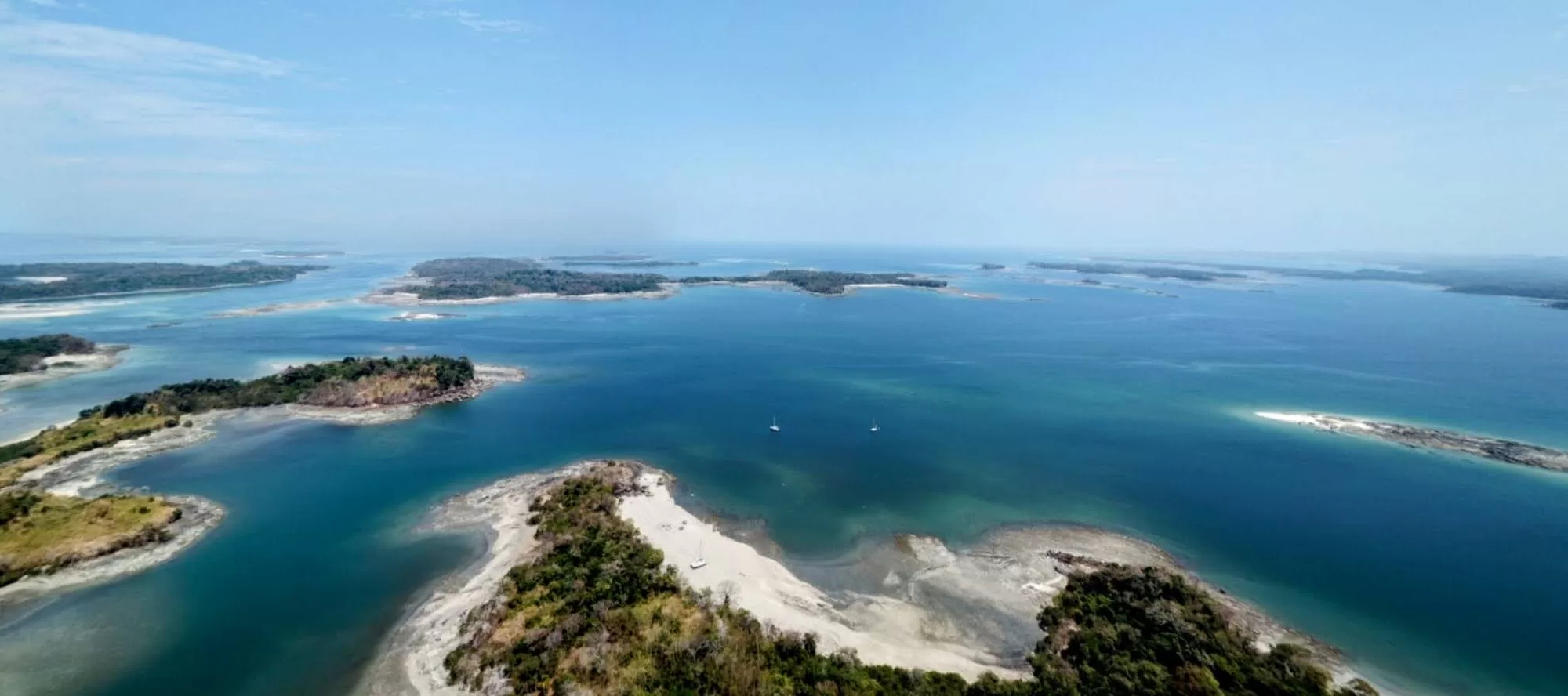It’s been a while since our last post and I want to give an update on our time in Panama. Nic is working on the new hard dinghy and hard dodger, family comes to visit, and we prepare for our future travels down the Pacific Coast to Chile.
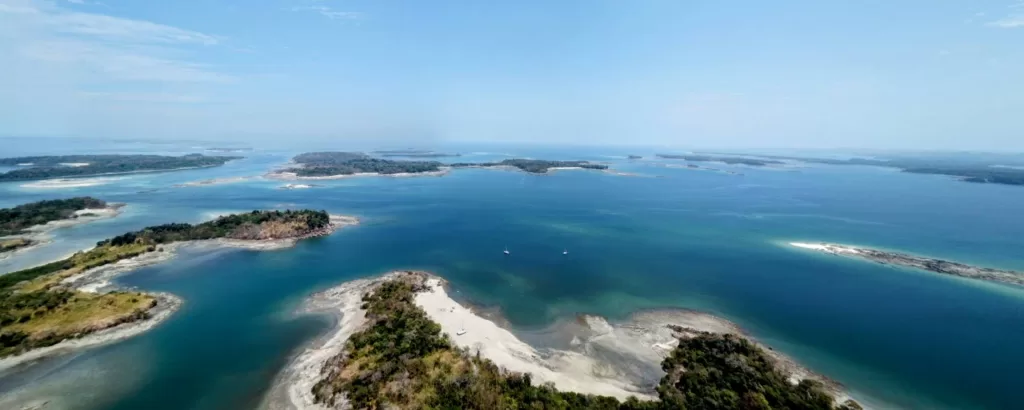
Las Perlas, the pearls of the Gulf of Panama
While in Panama we have been able to reconnect with cruising friends and meet many new cruisers coming through the Panama Canal or that came down from Mexico that are now planning to head either east through the Panama Canal, west toward French Polynesia, or north towards Mexico. Being able to discuss ideas, maintenance of sailboats, and having fun times with these cruisers greatly enhances our sailing experience. Once we leave Panama we do not expect to encounter many other cruising sailboats anymore as the west coast of South America is not known as a destination for cruising sailboats.
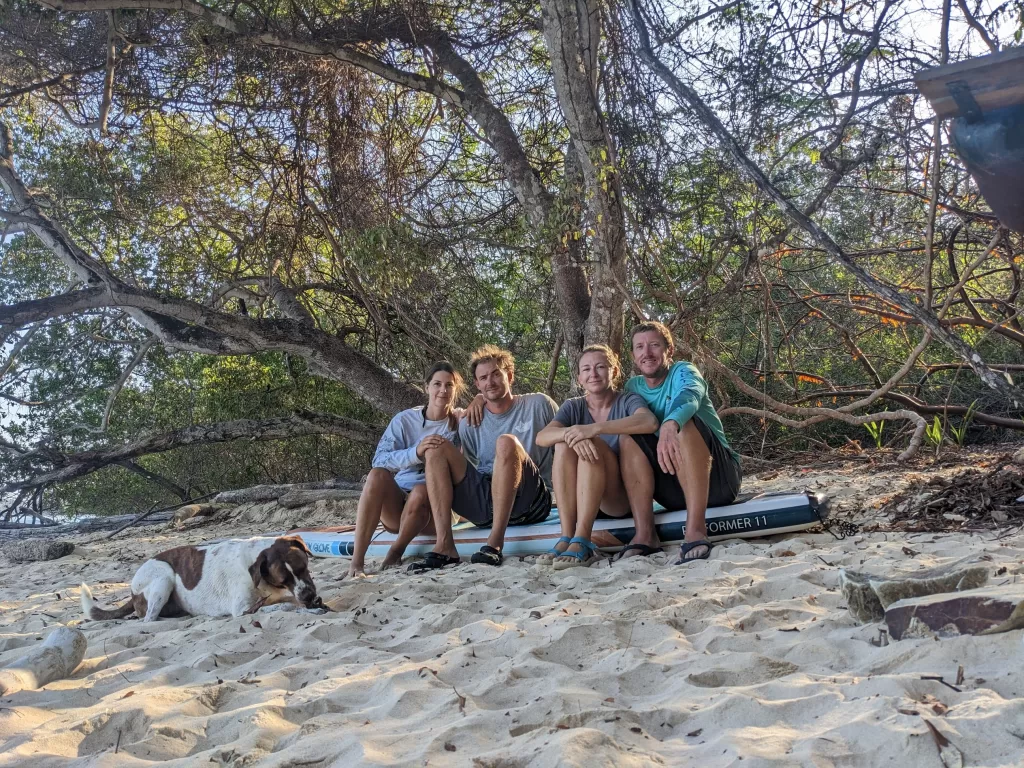
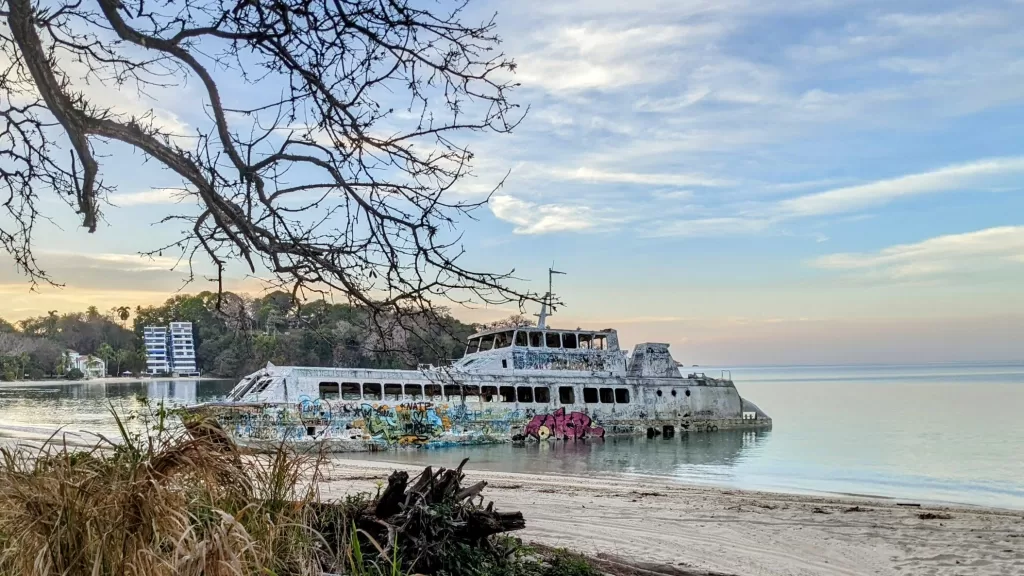
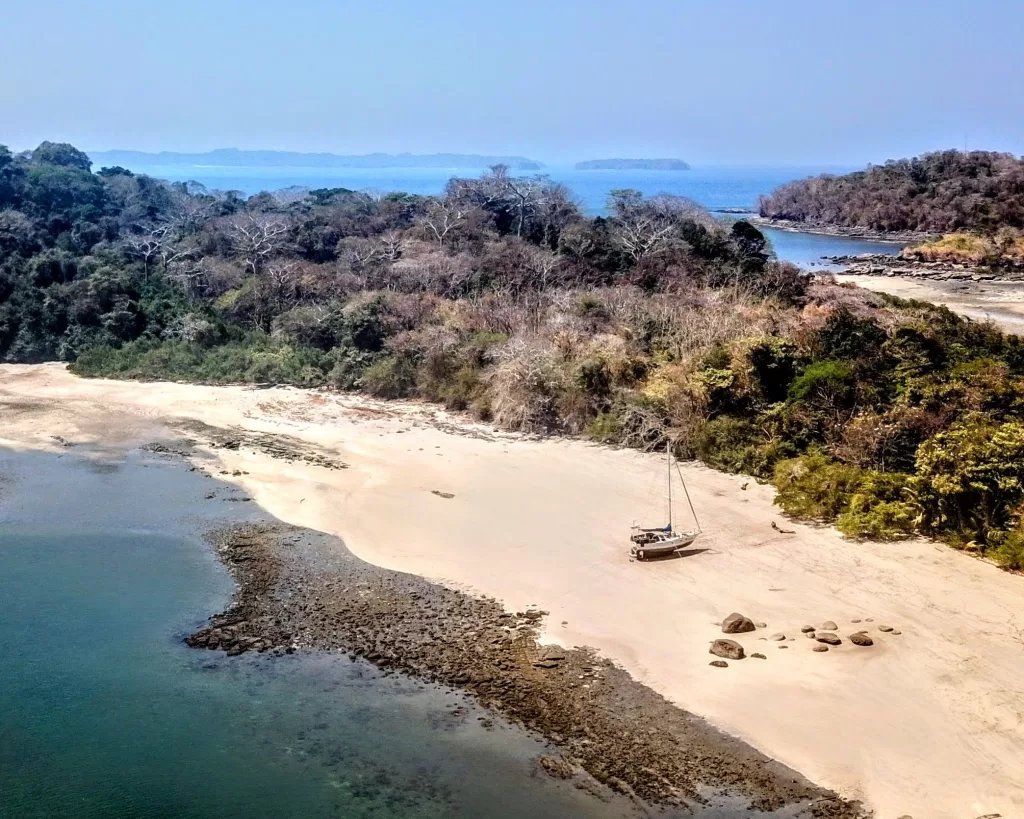
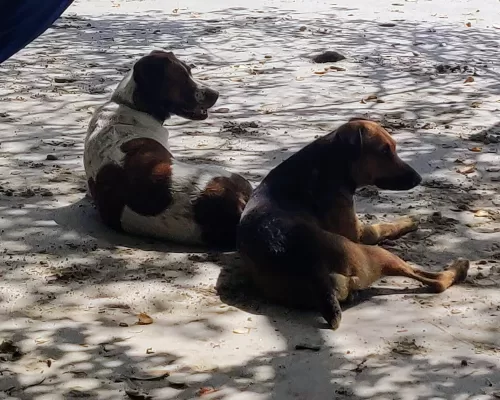
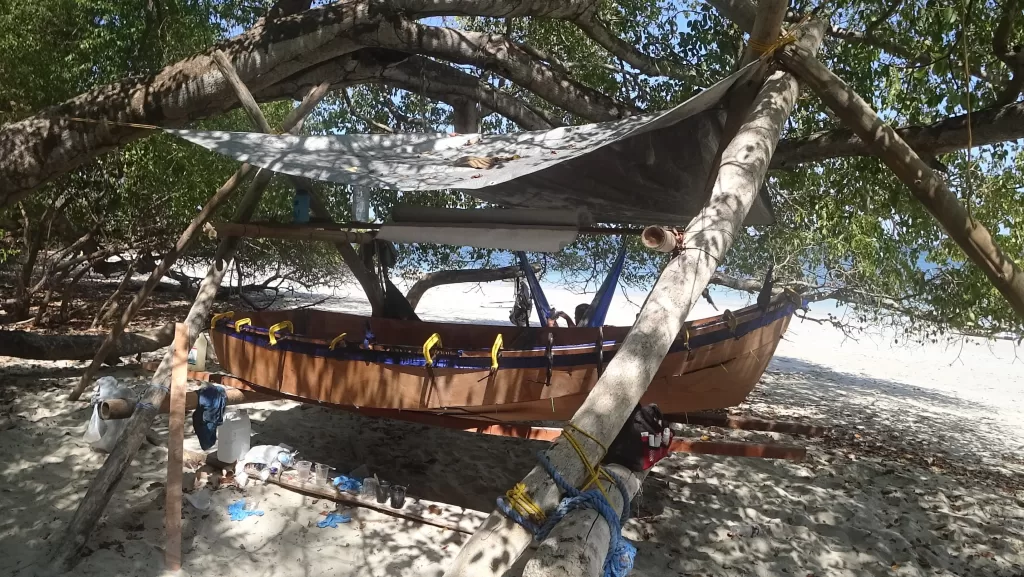
Working on our new dinghy and hard dodger
Nic has been working tirelessly on the new hard dinghy. We have spent most of our time in the Islas Perlas with occasional brief trips back to Panama City for groceries. I will let Nic report on his work on the dinghy in a future post.
In addition to the new dinghy, Nic is using the opportunity while working with plywood and fiberglass to replace our cracked hard dodger (cockpit sprayhood) with a fiberglass dodger that will hopefully not crack and deform as rapidly as the plastic one did.
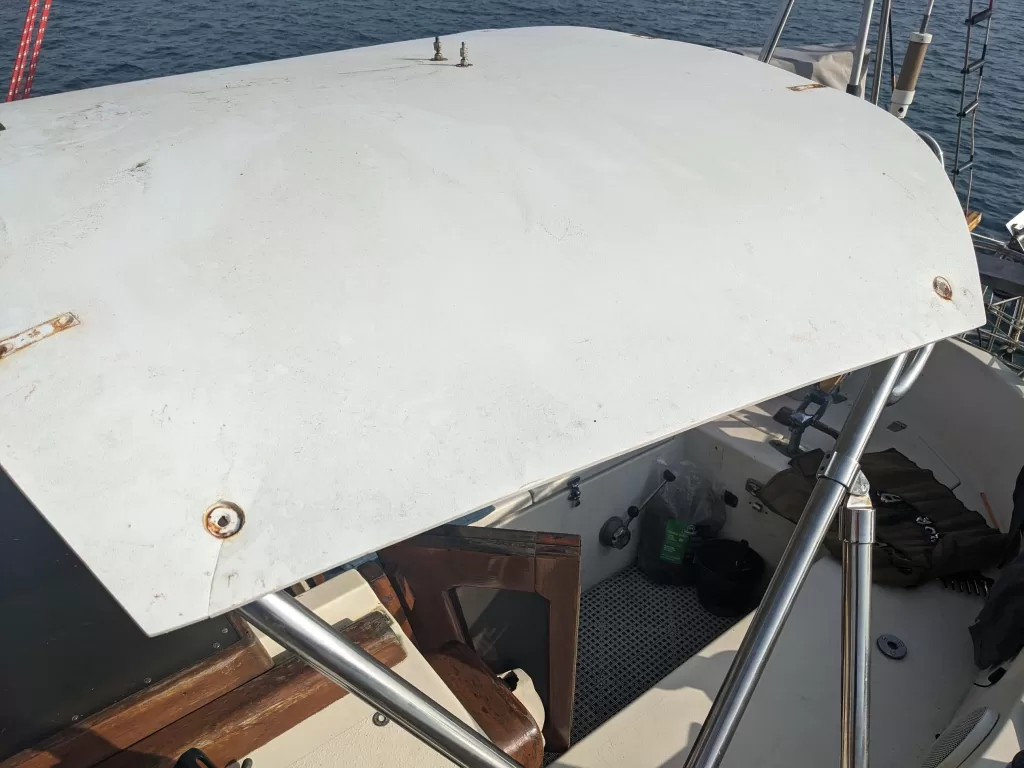
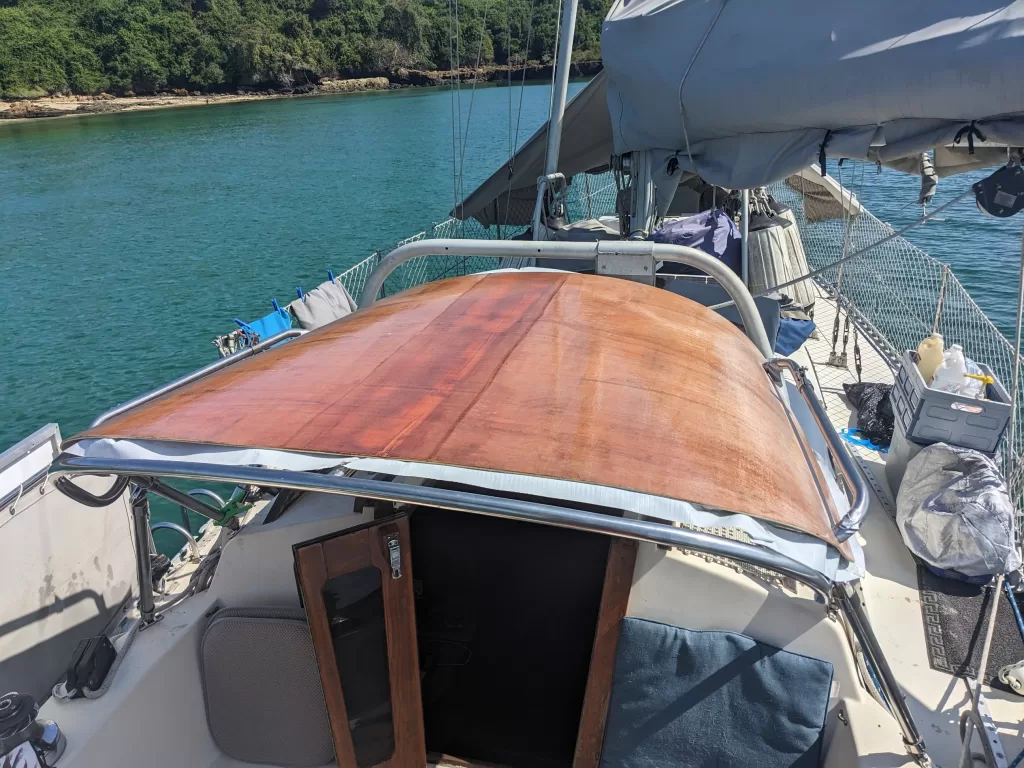
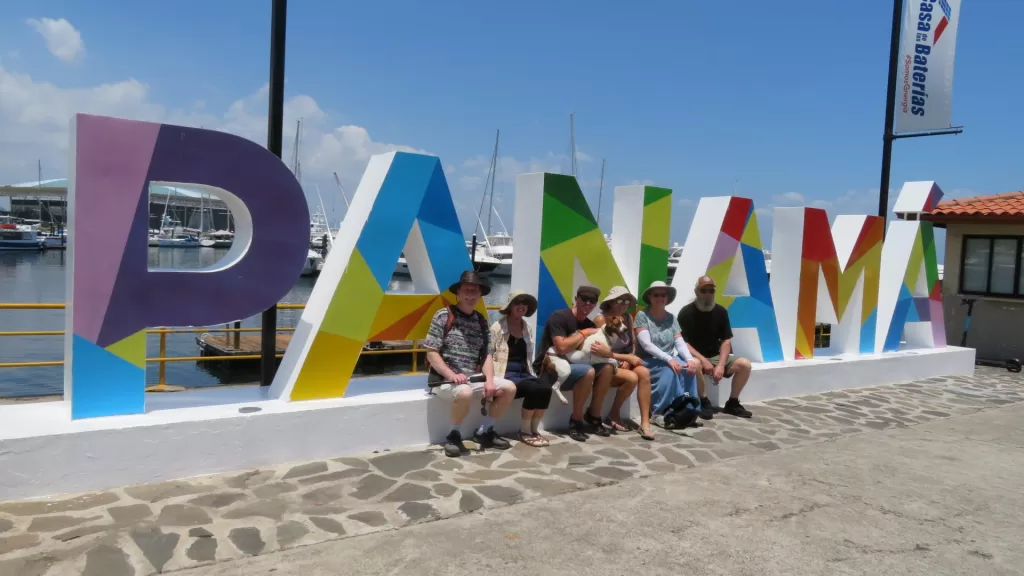
Panama City, a great place to meet family
Nic’s family came to visit us for a week during our stay here in Panama. They rented a spacious apartment in old town, Casco Viejo. It was fun to have both his parents and his aunt and uncle around for a week to show them Panama City, Casco Viejo, the Miraflores Locks of the Panama Canal, and enjoy Panama’s delicious foods.
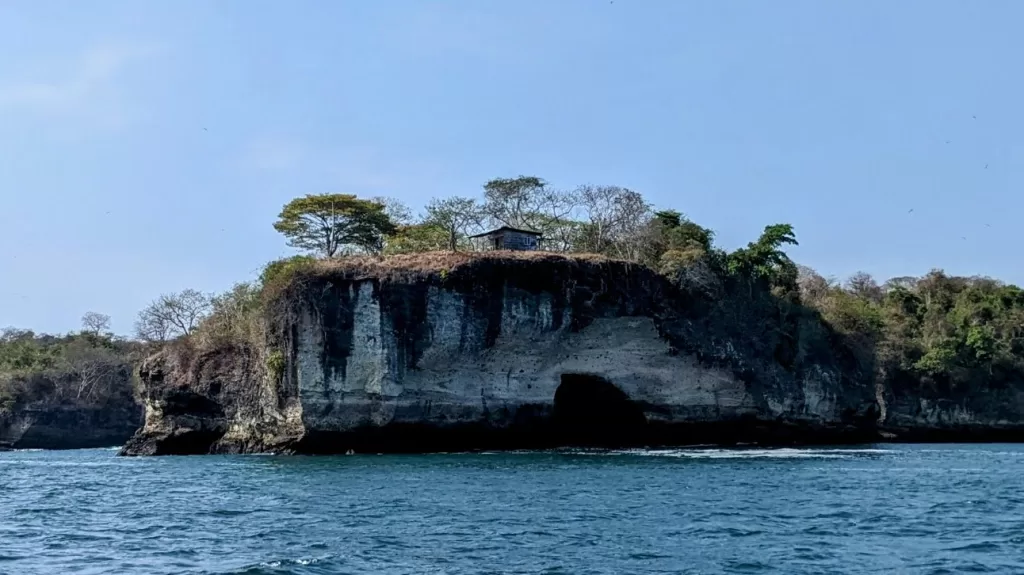
Provisioning and maintenance before a long sail
Panama City gives us the opportunity to provision with groceries and spare parts as it is a center of global logistics. Going grocery shopping here is an experience in itself as you can find products from all over the world. So far we have purchase many popular products from Europe such as apples from Austria, corn flakes from Germany, butter, cream, and cheese from France, New Zealand, and the Netherlands, as well as peanut butter, dairy, and canned products from the USA. Unfortunately the cost of groceries here is about as high as in California and western Europe.
One of our new favorites are cooked and mashed green plantains, called “mogu”, very similar in consistency and flavor to mashed potatoes. Another way to prepare green plantains is called “patacones” where the plantains are first boiled and then smashed into round, flat patties, and then fried. Pineapples, bananas, and coconuts are always abundant and cheap, whereas fruits like apples, pears, and grapes have to be imported from countries like Europe, the USA, or most often, Chile.
Before we depart Panama, we will also need to refill our diesel tanks to ensure we can access harbors, or motor if the wind stops for an extended period of time. Unfortunately, refilling boat diesel tanks typically adds a hefty docking fee when tying up to a fuel dock unless we “jerry can” the diesel by filling five gallon jugs at regular car gas stations and haul them back to the boat one by one. We rarely do this as it takes a lot of time and many dinghy trips to and from shore.
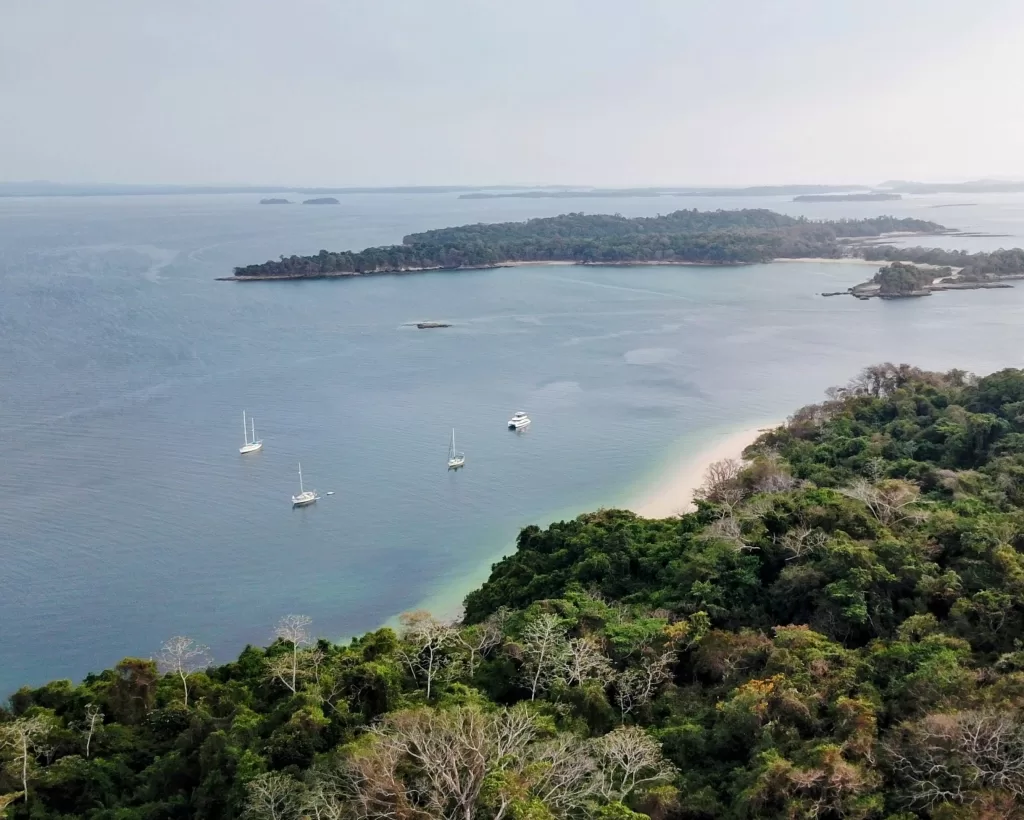
Preparing for South America
We have been researching the requirements for entering Ecuador but unfortunately there is not much information available and what is available seem to be outdated or unconfirmed. So far we have been unable to get any response from the various Navy and Port Captain offices we have contacted in Ecuador to ensure we will be able to enter. We are not planning to stop in Peru, because of its current political situation and since the country is not usually a stop for recreational sailors, there are few facilities and procedures for entering Peru. So for now, we hope to sail straight to Chile. This will allow us to go further offshore where the winds and currents should be more favorable for heading south. We have also contacted the Chilean authorities for additional information about entering Chile. We have yet to receive any responses.
Besides determining the official entry requirements for each country, we also have to consider what Rua Hatu needs to be ready for sailing all the way south to Chile. Sailing south close to the Pacific coast of South America has some disadvantages due to the prevailing southern winds going north along the coast. Additionally, the Humboldt Current which typically goes south to north along the coast may reduce our speed if we sail too close to the coast. For now we are still waiting to hear from Ecuadorian authorities but we might jump directly down to Chile by staying well offshore to avoid adverse winds and currents.
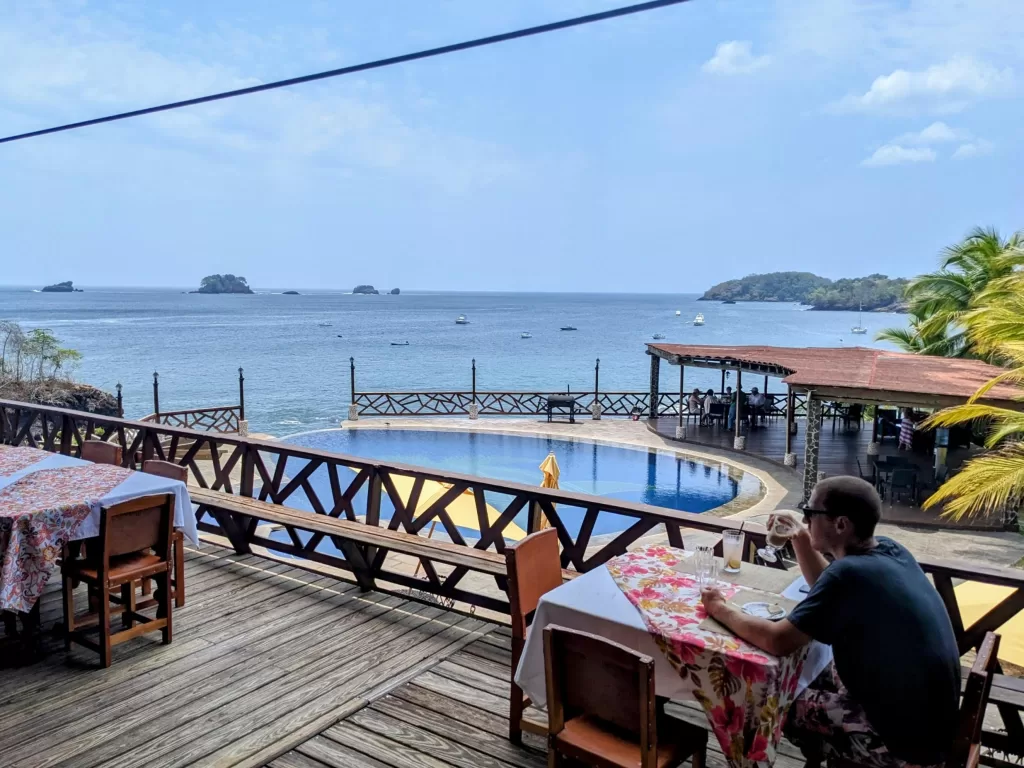
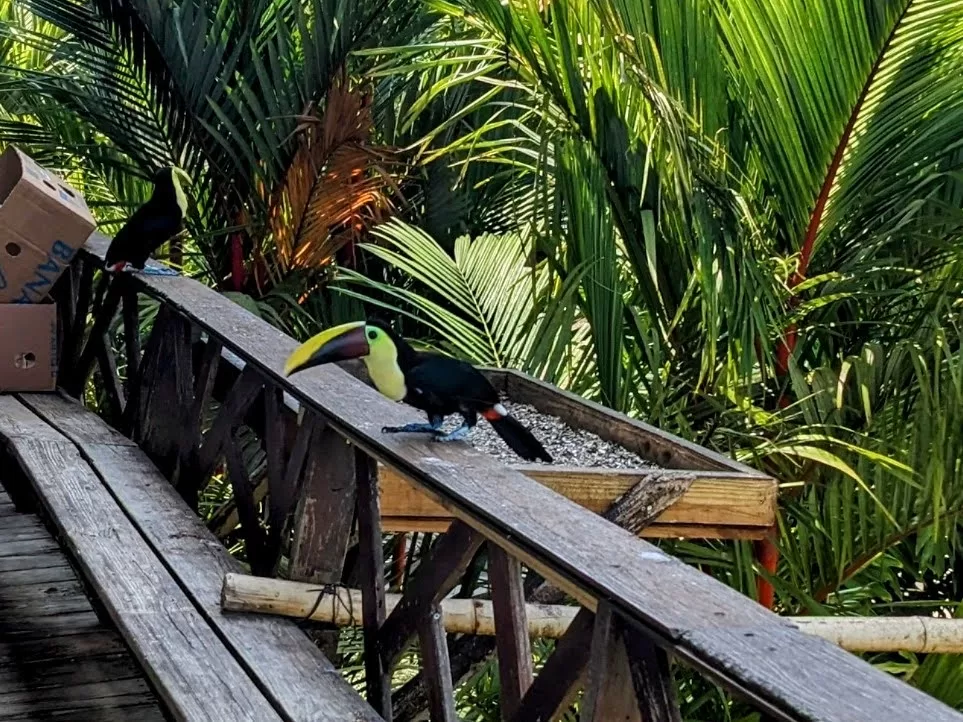
For now we will continue to enjoy the beautiful Islas Perlas and focus on finishing the sailing and rowing setup on our new dinghy since we can jump to Panama City easily if we happen to need any additional parts or hardware.
